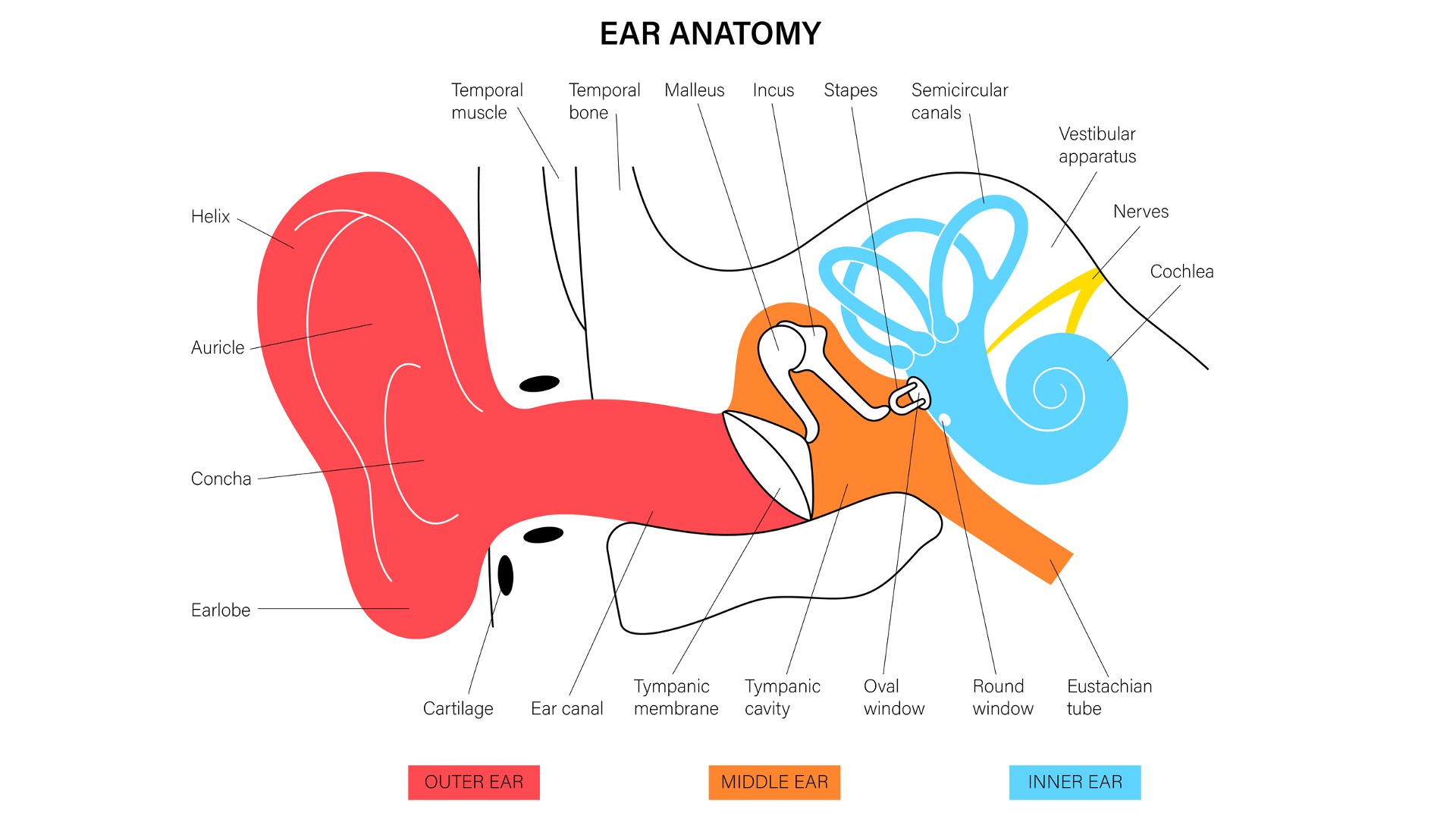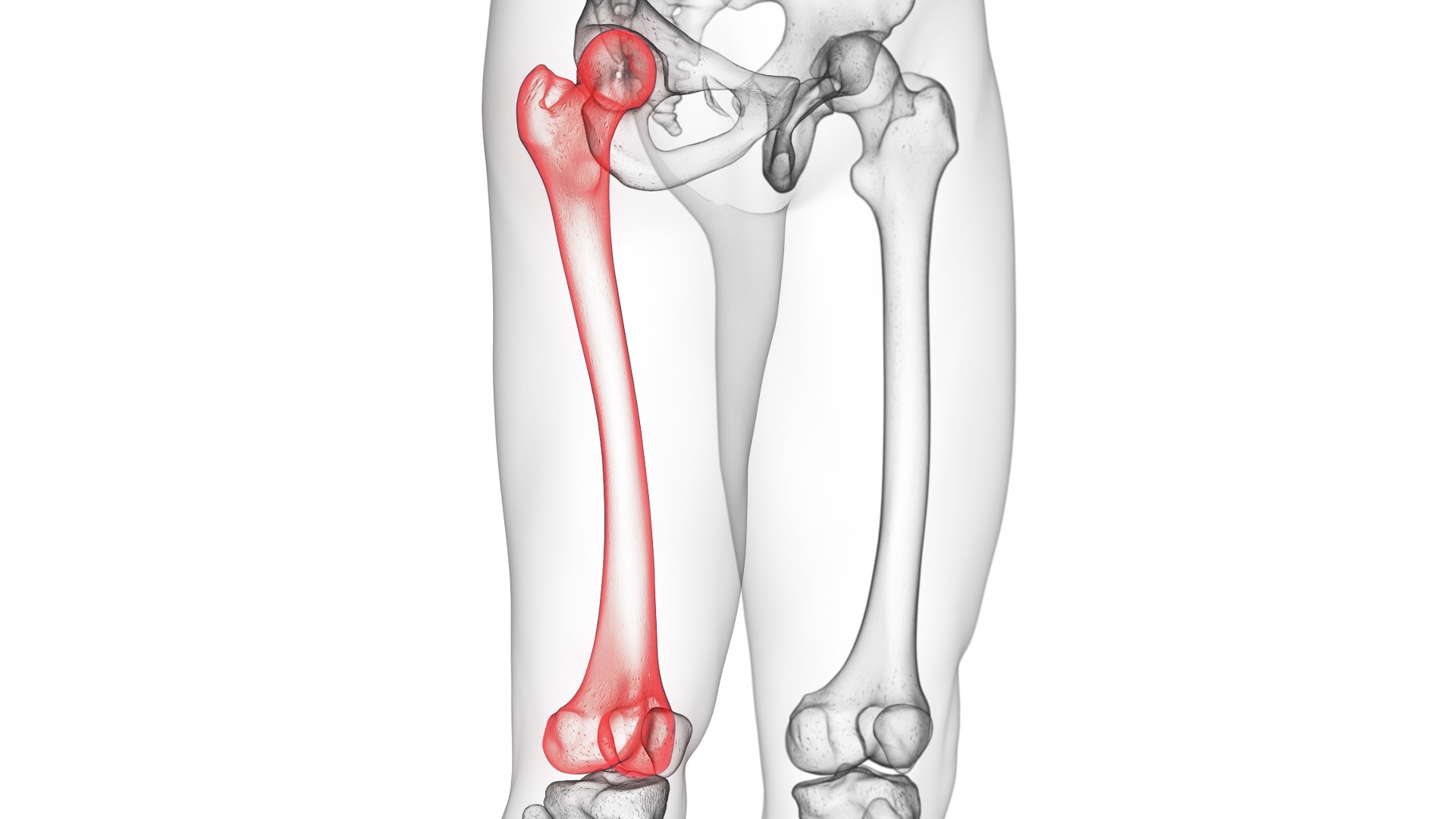
What's the largest bone in the human body? (What about the smallest?)
Adult humans have 206 bones in their bodies. Which one towers above the rest?

The human body possesses hundreds of bones, from the long bones of the limbs to the fused bones of the skull. But what is the smallest bone in the human body? And what is the largest bone?
The smallest human bone
A baby's body has about 300 bones at birth. These eventually fuse to form the 206 bones that adults generally have, according to the Nemours Children's Health System.
But no matter the age of an individual, the smallest bones in the human body are found in the ear, Dr. Robert Glatter, an emergency physician at Lenox Hill Hospital in New York City, told Live Science. These bones are called the malleus, incus and stapes — the Latin names for hammer, anvil and stirrup, whose shapes they vaguely resemble, according to the National Institute on Deafness and Other Communication Disorders (NIDCD).
The fleshy outer ear channels sound through a narrow passageway known as the ear canal toward a thin sheet of tissue known as the eardrum. Sound waves make the eardrum vibrate.
Related: How many organs are in the human body?

The malleus, incus and stapes, which altogether are known as the ossicles, are connected to the eardrum. This trio of bones helps convert vibrations "into nerve signals," Glatter said.
The smallest of the ossicles is the stapes. It measures about 0.1 to 0.13 inches (2.6 to 3.4 millimeters) in length and weighs about 0.00007 to 0.00015 ounces (2 to 4.3 milligrams), according to Guinness World Records. The three ossicles together are the size of an orange seed, the NIDCD noted.
Sign up for the Live Science daily newsletter now
Get the world’s most fascinating discoveries delivered straight to your inbox.
Ossicles found in fossil remains have shed a great deal of light on mammalian evolution. For instance, a 2017 study in the journal Nature described a mouse-size gliding mammal known as Arboroharamiya allinhopsoni that lived in what is now China about 160 million years ago during the Jurassic period. The creature possessed some of the earliest known examples of mammalian ossicles.
Whereas reptiles possess a single bone in the ear and multiple lower jawbones, every living mammal possesses multiple ossicles in the ear and a single lower jawbone. Previous research suggested that as mammals evolved from reptiles, several jawbones evolved to become the ossicles.
Previously, scientists thought all mammals, from egg-laying monotremes such as the platypus, to placental mammals such as humans, evolved ossicles just once in their common history. However, the 2017 study found that A. allinhopsoni possessed five ossicles radically different from those of other mammals. This suggests the complex structures of the mammal ear may have evolved independently more than once, the study noted.
The largest human bone

The largest bone in the human body is the femur in the leg, "nearly 20 inches long (50 centimeters) in adults," Glatter told Live Science in an email. "It's commonly referred to as the thigh bone."
The femur "extends from the hip down towards the knee," Glatter said. It normally constitutes about 27.5% of a person's stature, according to Guinness World Records. The longest recorded femur measured 30 inches (76 cm), which belonged to Julius Koch, better known as The Giant Constantin – a German-born man with gigantism who lived from 1872 to 1902 – Guinness World Records noted.
The femur is not only the longest bone in the body, but also its strongest, capable of supporting as much as 30 times the weight of your body, according to the Cleveland Clinic. "It helps to support the weight of the skeleton and is critical for stability and walking," Glatter said.
Human femurs can resist compression forces of about 1,800 to 2,500 pounds (800 to 1,100 kilograms), according to Britannica. This strength helps explain why it is one of the most well-preserved bones in skeletal remains, helping it make great contributions to archaeology, according to a 2019 study in the Journal of Clinical Medicine Research.
Originally published on Live Science.











